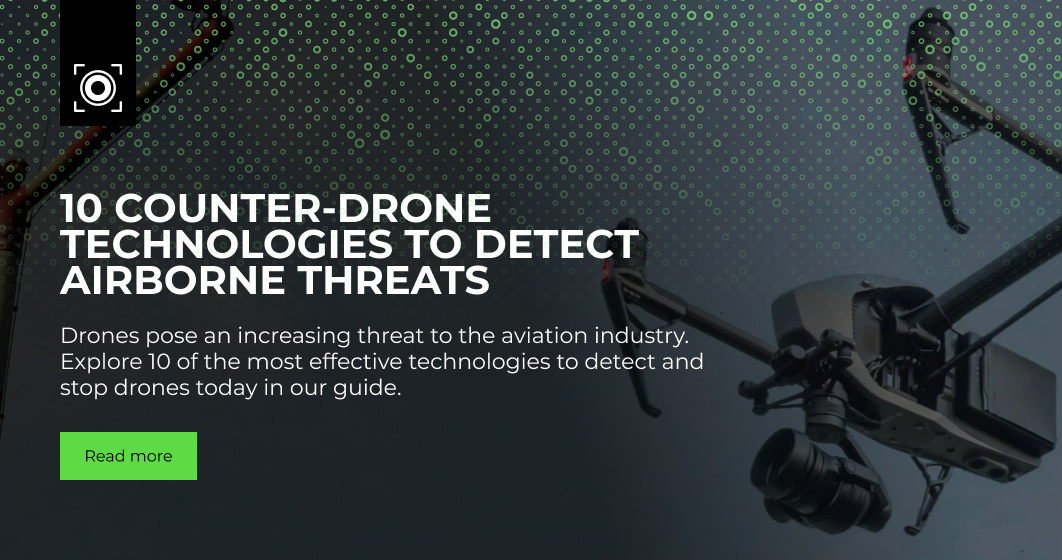Hosting an event at your stadium should be an opportunity to create joy and memorable experiences. However, unmanned aerial systems (UAS), like drones, can cause disruption. And the threat of drone disruption at stadiums is only growing.
Let's explore how people use drones, the risk they present, and how to protect your stadium to avoid unnecessary worry hanging over your head (and overhead!).
How Do People Use Drones at Stadiums?
The majority of drone users report using their drones for recreational purposes. One study found that 77% use them for videography, 74% for photography, and 67% for entertainment. This shows a significant proportion of people use them for harmless activities.
At stadiums, most drone use is likely to come from attendees using drones for the same purposes. For example, to capture footage of the event they’re excited to attend.
However, well-intended or not, drones can disrupt your events and breach your policies. Here are a few examples drones that have caused major disruption.
3 Examples of Drone Disruption at Stadiums
1. Drone Drops Leaflets Over Crowd at NFL Game
A man flew his drone over a National Football League game in the U.S. He used the unmanned aerial system to drop anti-television news leaflets to unsuspecting football fans. The man argued he was exercising his right to free speech, despite no-fly zones set up within 3,000 ft of the stadium.
2. Drone Stops a Football Match
A drone flying over a football match in the U.K. stopped the game completely. The match was stopped for several minutes while officials investigated the incident. The drone was reported to be flying above the crowds and was failing to display an operator ID, causing significant concern.
3. Five Drones Cause Concern at Stadium
A drone halted a game at M&T Bank Stadium. But this wasn't the first time a drone caused disruption. Officials report that they had intercepted a total of five drones that day alone, this is despite flight restrictions from one hour before the game and one hour after the game.
Why is it Important to Track Drones at Stadiums?
Drone activity can damage the integrity of your events, harm your stadium’s reputation, and put the safety of your attendees at risk. But not every drone user has bad intentions, it's important to identify, track, and manage any drones in your stadium.
Here’s how.
How to Manage Stadium Drone Protection
1. Ban Drones from Your Stadium
A simple way to reduce drone risks is to ban attendees from bringing drones and other UASs into your stadium.
You can do this by adding them to your list of prohibited items. Some common examples of prohibited items are:
- Flares or fireworks
- Weapons
- Lasers
Make sure you add drones to the list. In the U.S., drones are prohibited in and around stadiums with a capacity of over 30,000. But this should be the case in stadiums of any size, especially if you want to reduce risk.
2. Increase Surveillance
Make sure your security teams are aware of the drone threat. Monitor crowds who are inside and outside your stadium to make sure nobody is flying drones.
Additionally, you can increase surveillance with security cameras. Include coverage of airspace so that security personnel can respond quickly if they spot a drone flying.
3. Raise Awareness
We all bring a phone or camera with us to a big event. So, it’s likely your attendees might not realise that drones are off the guest list.
If drones are a big problem at your stadium, consider notifying attendees ahead of time via your communication channels that drones are prohibited. This makes them less likely to bring them – reducing the threat.
How a Drone Detection System Can Help
Drone detection radar and counter-UAS radar detects, tracks, and in some cases, classifies drones automatically. This saves your security teams’ time from watching the skies for threats. And it reduces the chances that any smaller drones will be missed.
A drone detection radar covers 360° from its placement and comes with a standard instrumented range of five kilometres, or 3.1 miles. By deploying a drone detection radar at a strategic point on the perimeter of your stadium, you can fully cover your airspace.
The drone detection radar will provide your security teams with context and situational awareness. It tracks in real-time, displays flight paths, and can also distinguish drone size. Importantly, the radar can also be integrated with other sensors like cameras. It offers the earliest warning and can cue other sensors to further verify and track the threat.
Most importantly, this data helps you distinguish genuine threats from false alarms. You get the context needed to recognise potentially harmful behaviour, like flight patterns flying too close to the event or crowd, so you can take action immediately.
Automate Your Drone Detection and Protect Your Stadium
Drones are a security concern that’s here to stay. Your stadium requires 24/7 drone detection to remain protected. Think about it – drone users don’t need an event as a reason to enter your stadium – they could act any time, day or night.
A drone detection radar automates the surveillance process. You get real-time, 24/7 monitoring of your stadium and the data to empower your security teams. No matter if you’re hosting a 50,000-capacity event or you’re closed for the season – you can be rest assured your stadium is protected.


